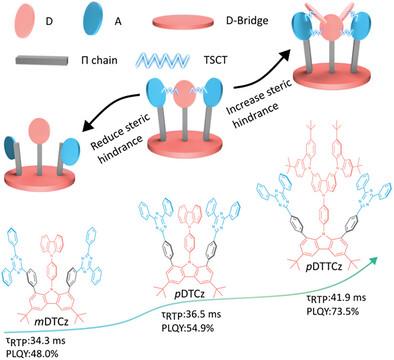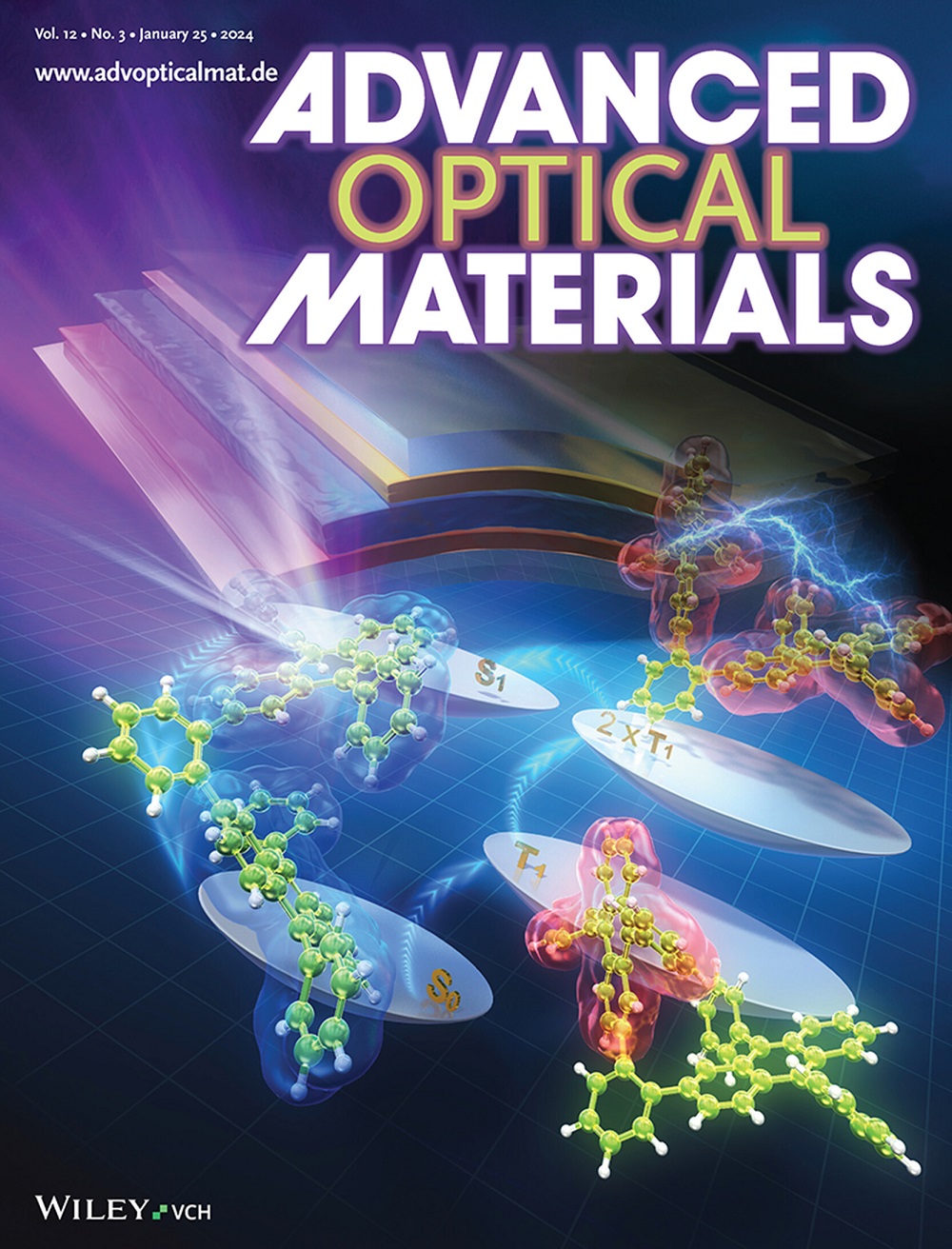Intramolecular Through‐Space Charge‐Transfer Effect for Achieving Room‐Temperature Phosphorescence in Amorphous Film
IF 8
2区 材料科学
Q1 MATERIALS SCIENCE, MULTIDISCIPLINARY
引用次数: 0
Abstract
Organic emitters that exhibit room‐temperature phosphorescence (RTP) in neat films have application potential for optoelectronic devices, bio‐imaging, and sensing. Due to molecular vibrations or rotations, the majority of triplet excitons recombine rapidly via non‐radiative processes in purely organic emitters, making it challenging to observe RTP in amorphous films. Here, a chemical strategy to enhance RTP in amorphous neat films is reported, by utilizing through‐space charge‐transfer (TSCT) effect induced by intramolecular steric hindrance. The donor and acceptor groups interact via spatial orbital overlaps, while molecular motions are suppressed simultaneously. As a result, triplets generated under photo‐excitation are stabilized in amorphous films, contributing to phosphorescence even at room temperature. The solvatochromic effect on the steady‐state and transient photoluminescence reveals the charge‐transfer feature of involved excited states, while the TSCT effect is further experimentally resolved by femtosecond transient absorption spectroscopy. The designed luminescent materials with pronounced TSCT effect show RTP in amorphous films, with lifetimes up to ≈40 ms, comparable to that in a rigid polymer host. Photoluminescence afterglow longer than 3 s is observed in neat films at room temperature. Therefore, it is demonstrated that utilizing intramolecular steric hindrance to stabilize long‐lived triplets leads to phosphorescence in amorphous films at room temperature.

实现非晶薄膜室温磷光的分子内穿透空间电荷转移效应
在整洁薄膜中显示室温磷光(RTP)的有机发光体在光电设备、生物成像和传感方面具有应用潜力。由于分子振动或旋转,大多数三重激子会在纯有机发光体中通过非辐射过程快速重组,因此在非晶态薄膜中观察 RTP 具有挑战性。本文报告了一种利用分子内立体阻碍诱导的空间电荷转移(TSCT)效应来增强非晶整齐薄膜中 RTP 的化学策略。供体基团和受体基团通过空间轨道重叠相互作用,同时分子运动受到抑制。因此,在光激发下产生的三胞胎在无定形薄膜中得到稳定,即使在室温下也能产生磷光。溶解变色效应对稳态和瞬态光致发光的影响揭示了参与激发态的电荷转移特征,而飞秒瞬态吸收光谱则进一步在实验中解析了 TSCT 效应。所设计的具有明显 TSCT 效应的发光材料在无定形薄膜中显示出 RTP,其寿命可达 ≈40 毫秒,与刚性聚合物宿主中的寿命相当。在室温下,在纯薄膜中观察到的光致发光余辉长于 3 秒。因此,这证明了利用分子内立体阻碍来稳定长寿命三聚体可在室温下在无定形薄膜中产生磷光。
本文章由计算机程序翻译,如有差异,请以英文原文为准。
求助全文
约1分钟内获得全文
求助全文
来源期刊

Advanced Optical Materials
MATERIALS SCIENCE, MULTIDISCIPLINARY-OPTICS
CiteScore
13.70
自引率
6.70%
发文量
883
审稿时长
1.5 months
期刊介绍:
Advanced Optical Materials, part of the esteemed Advanced portfolio, is a unique materials science journal concentrating on all facets of light-matter interactions. For over a decade, it has been the preferred optical materials journal for significant discoveries in photonics, plasmonics, metamaterials, and more. The Advanced portfolio from Wiley is a collection of globally respected, high-impact journals that disseminate the best science from established and emerging researchers, aiding them in fulfilling their mission and amplifying the reach of their scientific discoveries.
 求助内容:
求助内容: 应助结果提醒方式:
应助结果提醒方式:


